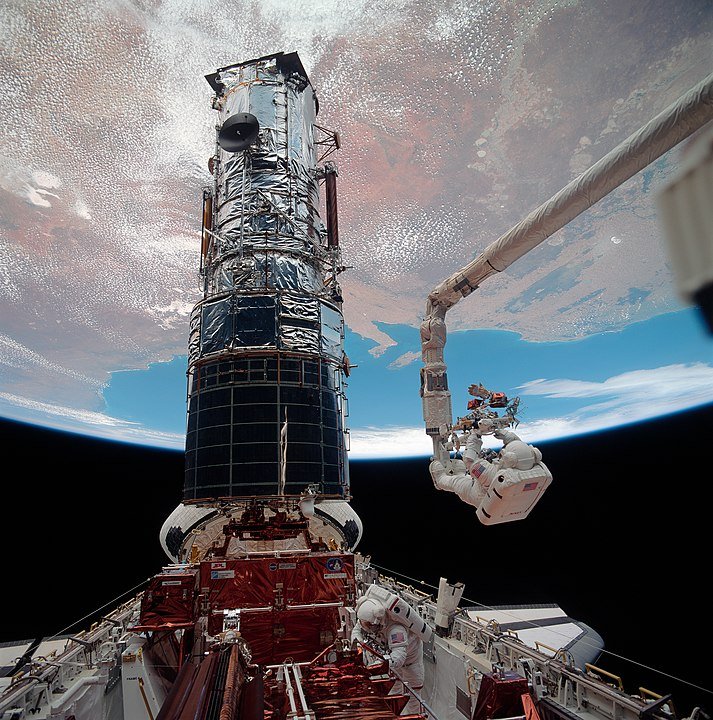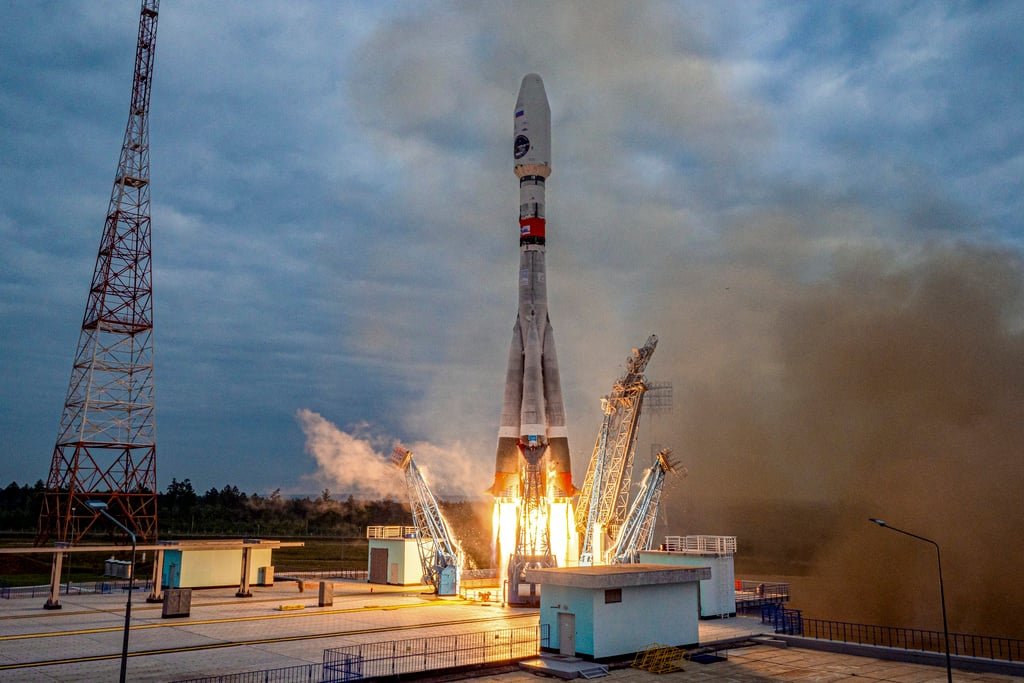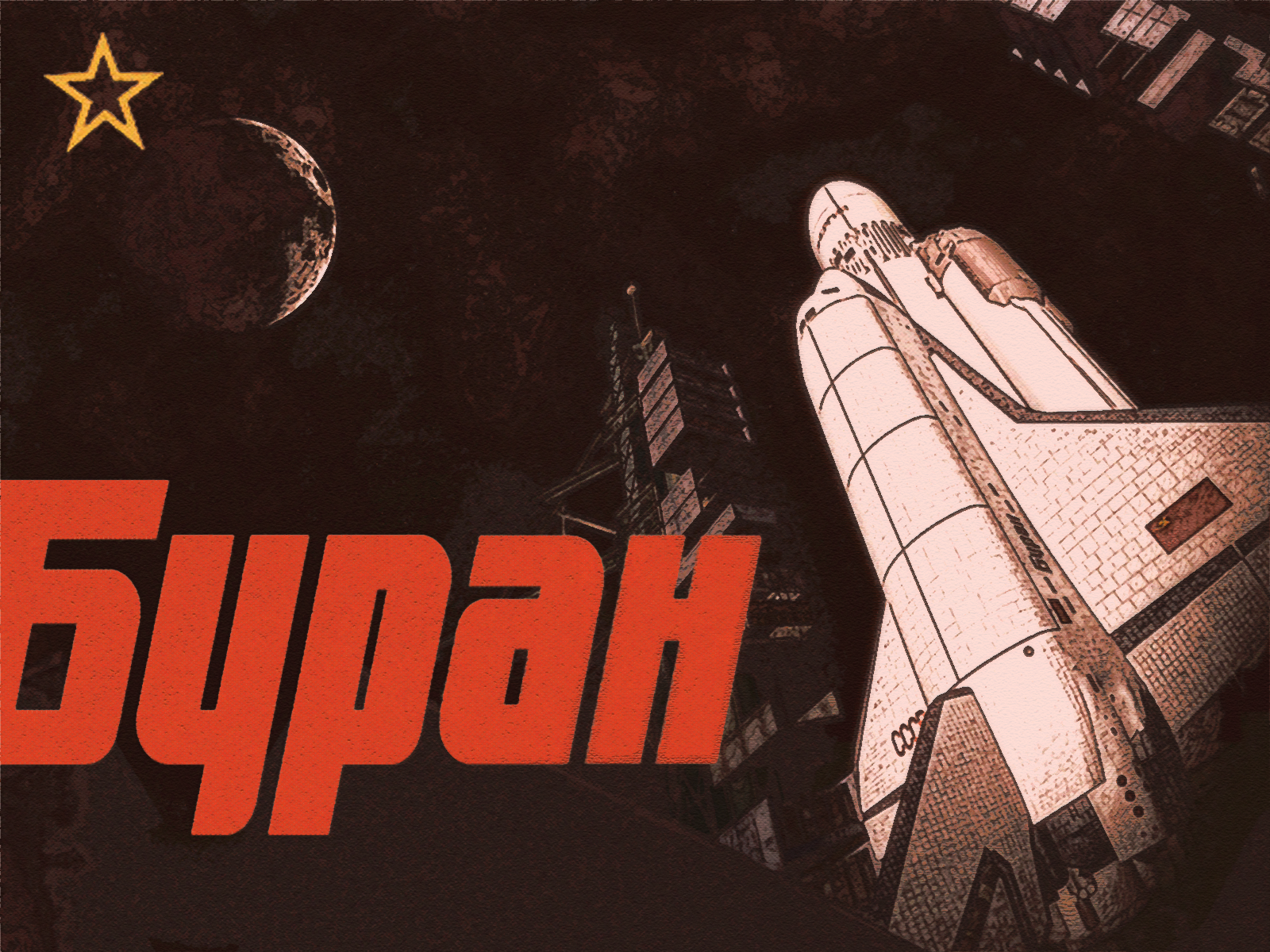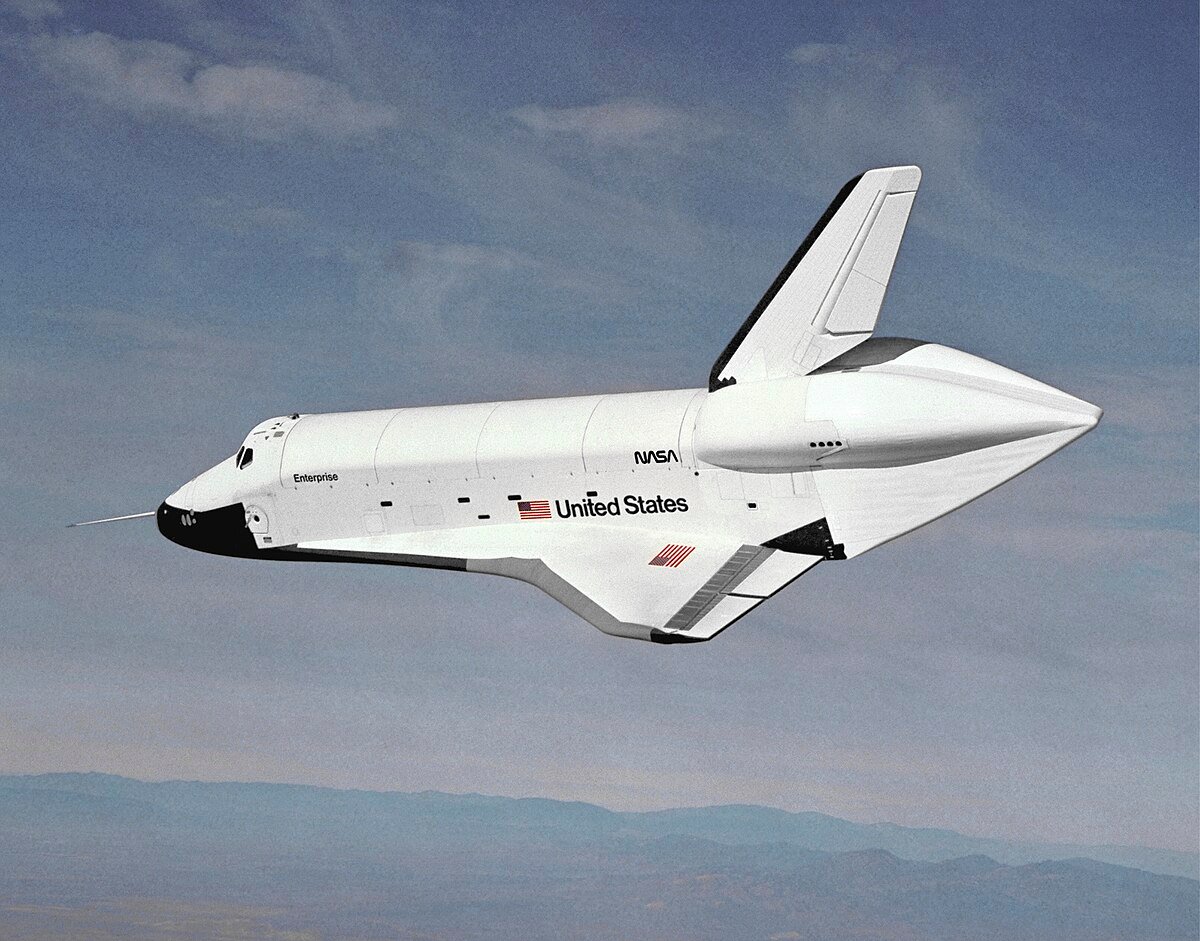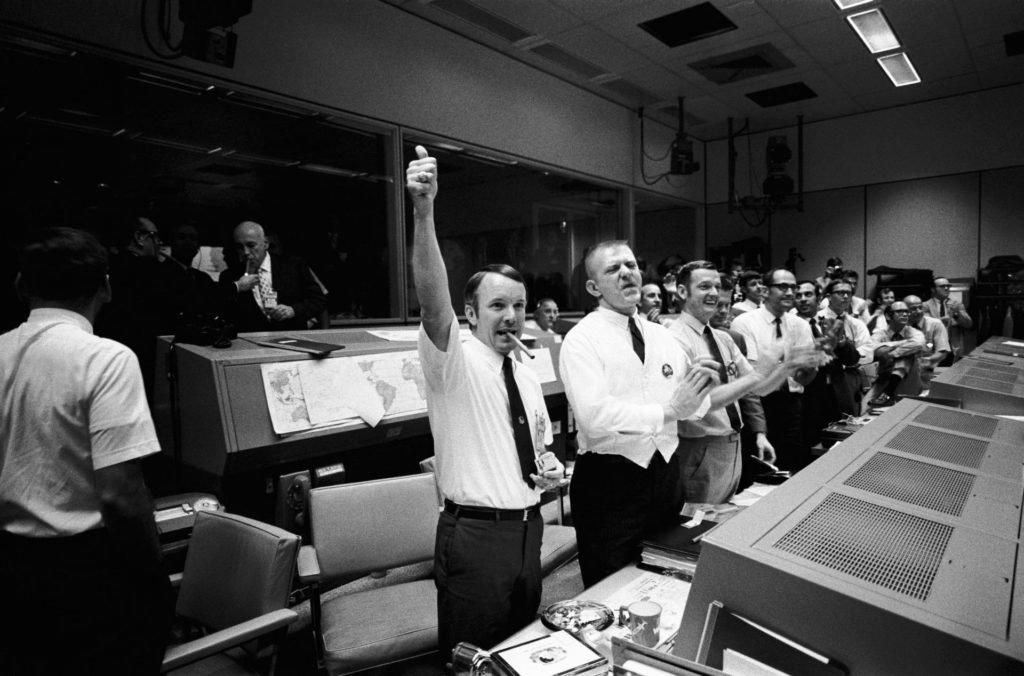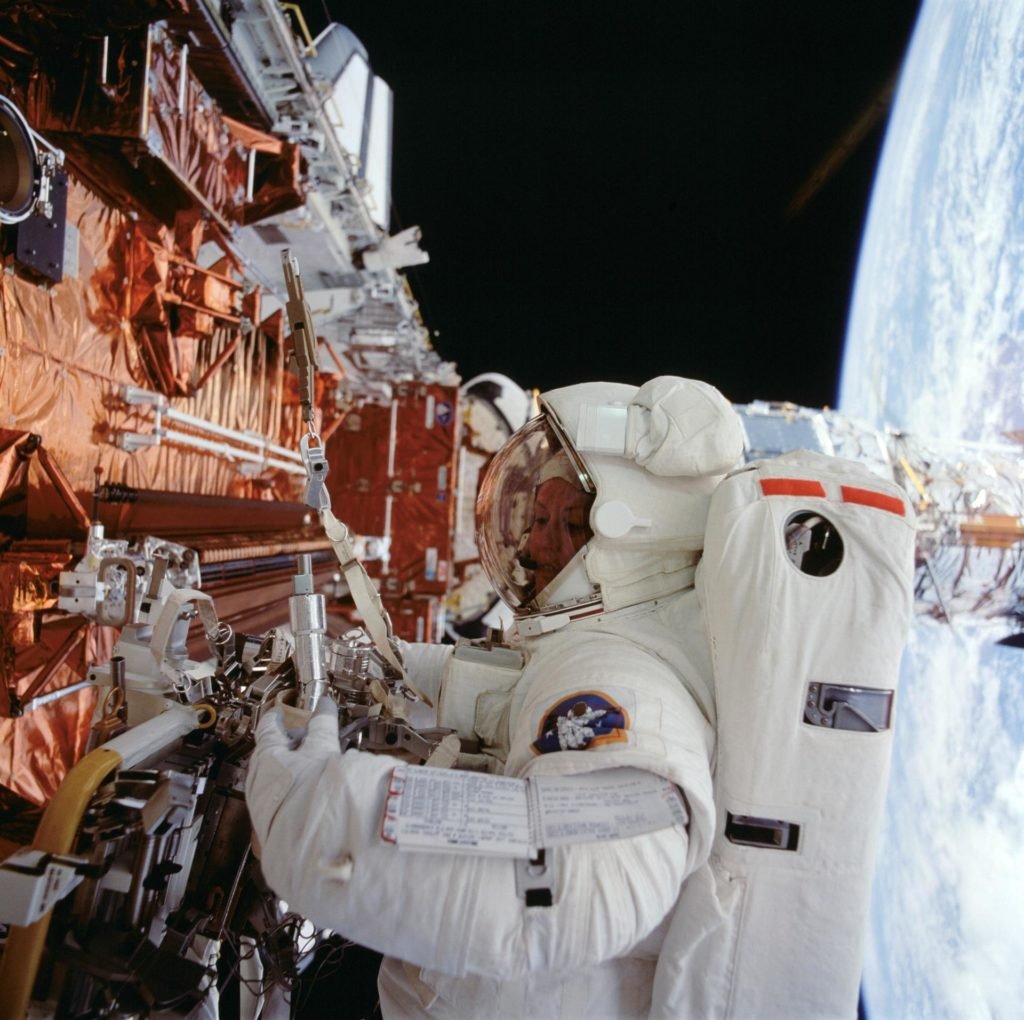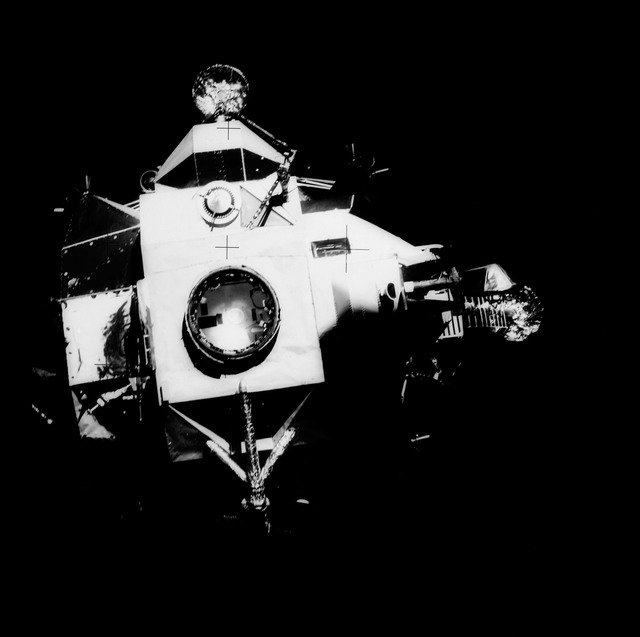While never venturing beyond Earth’s atmosphere, the Space Shuttle Enterprise represents a cornerstone in the evolution of space exploration technology. This article delves into the Enterprise’s origins, significance in the history of spaceflight, and lasting legacy. We’ll answer critical questions about the Enterprise to offer a comprehensive understanding of its impact.
Table of Contents
The Dawn of the Space Shuttle Era
The Space Shuttle Enterprise marked the beginning of a new era in space exploration, serving as the first tangible step toward developing reusable spacecraft. Before the shuttle program, space missions relied on single-use rockets and capsules, which were costly and limited in their ability to make space travel more routine. The Enterprise, as the first prototype in NASA’s ambitious space shuttle program, was a critical tool for testing the feasibility of a spacecraft that could be launched, landed, and reused multiple times. This concept of reusability was revolutionary and aimed to make space missions more sustainable and cost-effective.

Although the Enterprise never flew into space, its role was vital in validating key concepts and technologies that would later be used in operational shuttles. The prototype underwent extensive testing to assess its aerodynamic design, which included how it would handle re-entry into Earth’s atmosphere and land safely. These tests were crucial in refining the shuttle’s design, ensuring that the spacecraft could not only survive but also operate effectively in multiple missions. The Enterprise’s contributions laid the foundation for the successful launches of later space shuttles, making it a cornerstone in the history of space exploration.
The Genesis of the Space Shuttle Enterprise
The Space Shuttle Enterprise, the first of NASA’s shuttle programs, marked a groundbreaking era in space exploration. As the first full-scale prototype, the Enterprise was a pivotal step in moving from expendable launch vehicles to reusable spacecraft, a concept that promised to revolutionize space travel by making it more cost-effective and accessible.
What Company Made the First Space Shuttle?
Rockwell International, a leading aerospace manufacturer with a strong history in aviation and space technology, was selected by NASA to build the Space Shuttle Enterprise due to its expertise in complex aerospace systems like the Apollo Command and Service Modules. Tasked with creating a reusable spacecraft, Rockwell’s engineers in Downey, California, faced the challenge of designing a vehicle that could withstand the extreme conditions of space and re-entry while being reusable for multiple missions. This required innovative solutions, meticulous planning, and the development of new materials and technologies.
The Development and Testing Phases
The development phase of the Space Shuttle Enterprise was marked by extensive research, engineering innovation, and rigorous testing. Unlike the space capsules of the Apollo era, the shuttle was a much larger, more complex vehicle designed to be reusable, which required a different approach to both design and testing.
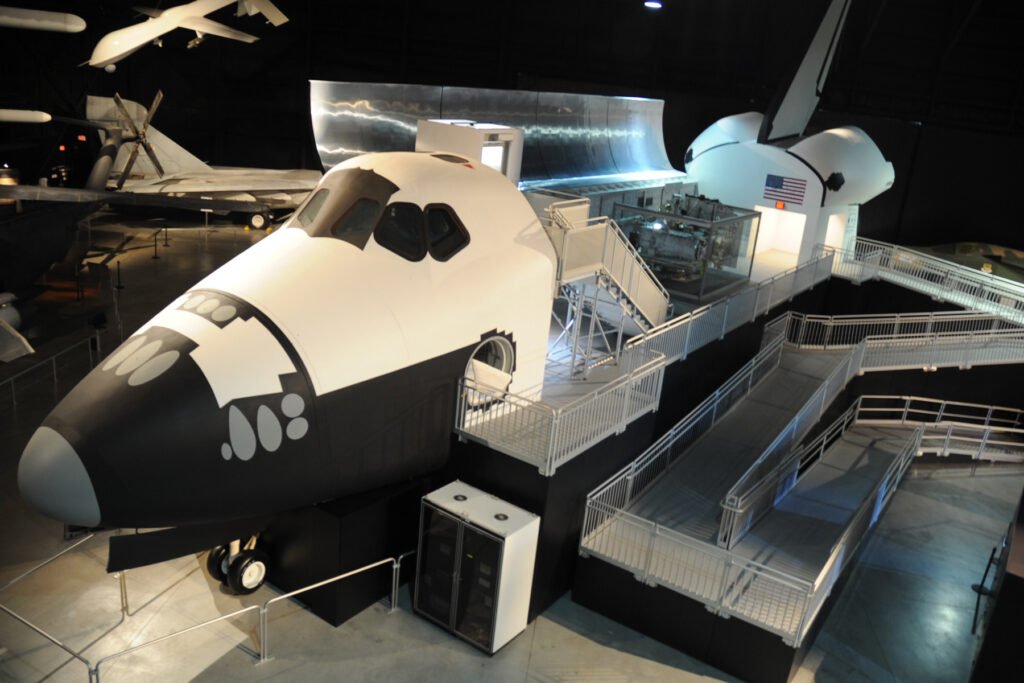
Research and Design
Rockwell’s engineers and designers spent years developing the shuttle’s systems, often working on uncharted territory. The Enterprise served as a test vehicle for these new concepts, allowing engineers to refine the shuttle’s systems before they were implemented in the operational orbiters. For instance, the Enterprise’s design incorporated a delta-wing configuration, which was selected after thorough aerodynamic testing. This wing design was critical for the shuttle’s ability to glide and land like an airplane after re-entry, a feature that distinguished it from traditional capsules that splashed down in the ocean.
Ground Testing
Before the Enterprise could be tested in the air, it underwent a series of ground tests. These included static tests, where the shuttle was subjected to stress conditions that simulated the forces it would experience during launch, orbit, and landing. These tests were crucial for identifying and addressing potential weaknesses in the structure and systems. For example, engineers focused on the integrity of the thermal protection tiles, which had to remain securely attached to the shuttle’s exterior under the intense heat and stress of re-entry.
Flight Testing
After extensive ground testing, the Enterprise was moved to flight tests. The most notable of these were the Approach and Landing Tests (ALT), where the shuttle was carried aloft by a modified Boeing 747, known as the Shuttle Carrier Aircraft (SCA). The Enterprise was then released to glide back to Earth, simulating the final approach and landing phase of an actual space mission. These tests were essential for validating the shuttle’s aerodynamic properties and its ability to land safely. The data gathered from these tests was used to refine the design of the operational shuttles, ensuring their safety and performance.
The Space Shuttle Enterprise Unveiled
The unveiling of the Space Shuttle Enterprise marked a significant milestone in the history of space exploration. Designated as OV-101, the Enterprise was the first space shuttle ever built, representing a new era in NASA’s space program. This prototype was a crucial step toward the development of a reusable spacecraft system, a revolutionary concept at the time.
What Was the First Space Shuttle in the World?
The Space Shuttle Enterprise was officially introduced to the public on September 17, 1976, during a high-profile ceremony at the Rockwell International facility in Palmdale, California. This event was not only a technical milestone but also a symbolic one, signaling the dawn of a new approach to space travel—one that emphasized reusability and versatility.
Significance of the Unveiling
The unveiling ceremony was attended by NASA officials, engineers, and even members of the original cast of Star Trek, highlighting the cultural significance of the shuttle’s name, which was inspired by the iconic starship USS Enterprise from the television series. The Enterprise was presented as the first tangible product of NASA’s ambitious Space Shuttle program, which aimed to make space travel more routine and accessible by developing a vehicle that could be launched, landed, and relaunched multiple times.
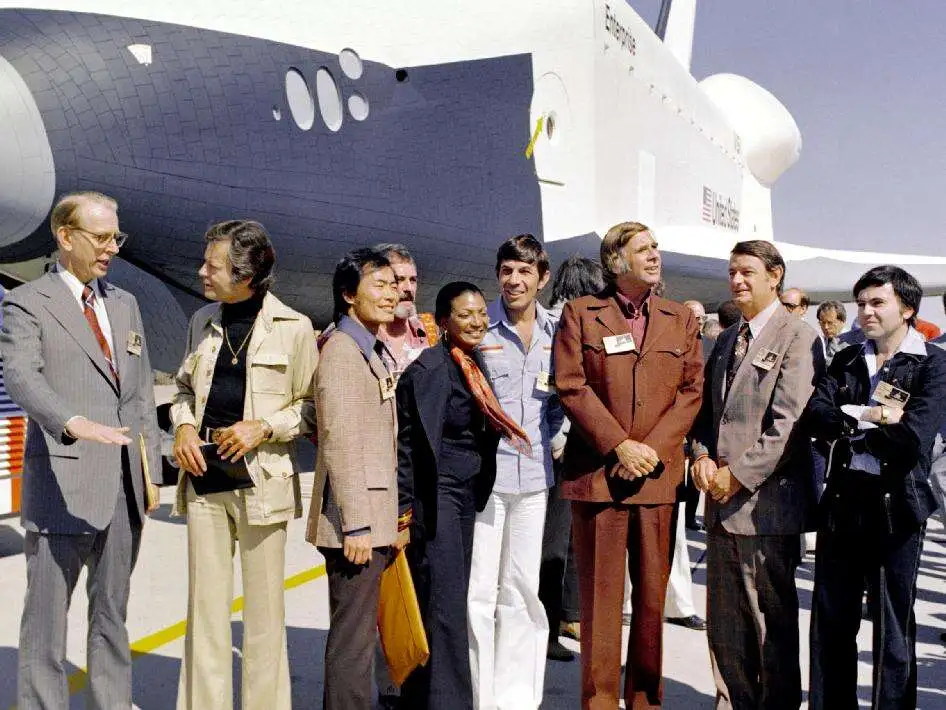
Although the Enterprise was never intended to fly in space, it played an essential role as a testbed for evaluating the design and operational features of the shuttle fleet. It was equipped with most of the systems that would be used in the operational shuttles, but it lacked some of the components required for spaceflight, such as main engines and a functional heat shield. Despite these limitations, the Enterprise was vital in providing NASA with the data needed to refine the shuttle’s design, ensuring the success of future missions.
Prototype for the Shuttle Fleet
As the first shuttle ever constructed, the Enterprise was a prototype, meaning it was built to test various aspects of the shuttle’s design rather than to conduct space missions. Its primary mission was to undergo a series of rigorous tests that would validate the shuttle’s design, particularly its aerodynamics, structural integrity, and landing capabilities. The data gathered from these tests was invaluable, as it informed the final design and construction of the operational shuttles, such as Columbia, Challenger, Discovery, Atlantis, and Endeavour.
Approach and Landing Tests
One of the most critical testing phases for the Space Shuttle Enterprise was the Approach and Landing Tests (ALT). These tests were designed to evaluate how the shuttle would perform during atmospheric re-entry and landing—a vital phase of any space mission. Understanding the shuttle’s behavior during these stages was crucial for ensuring the safety and reliability of the spacecraft.
Conducting the ALT
The Approach and Landing Tests were carried out between February and October 1977 at Edwards Air Force Base in California. To conduct these tests, the Enterprise was mounted atop a modified Boeing 747, known as the Shuttle Carrier Aircraft (SCA). This unique arrangement allowed the shuttle to be flown to high altitudes before being released to glide back to Earth. The tests were conducted in several stages:
Captive Flights
Initially, the Enterprise remained attached to the SCA throughout the flight. These “captive flights” allowed engineers to observe the shuttle’s behavior while securely mounted to the carrier aircraft. They provided critical data on the shuttle’s aerodynamics and the dynamics of the shuttle-carrier combination.
Captive-Active Flights
In the next phase, the Enterprise was still attached to the SCA but had the option of some limited independent movement. This phase helped refine the control systems and understand how the shuttle would respond once it was released from the carrier aircraft.
Free Flights
Finally, the Enterprise was released from the SCA during “free flights” to glide back to Earth on its own. These tests were the most crucial, as they simulated the final approach and landing phase of an actual shuttle mission. During these flights, the Enterprise’s aerodynamic stability, handling characteristics, and landing gear performance were thoroughly evaluated.
Outcomes of the ALT
The ALT program provided NASA with valuable insights into the shuttle’s behavior during critical phases of a mission. Engineers were able to assess the shuttle’s aerodynamic stability, mainly how it handled during the transition from flight to landing. The tests confirmed that the shuttle could glide safely to a runway landing, a key feature that distinguished it from previous spacecraft, which typically ended missions with ocean splashdowns.
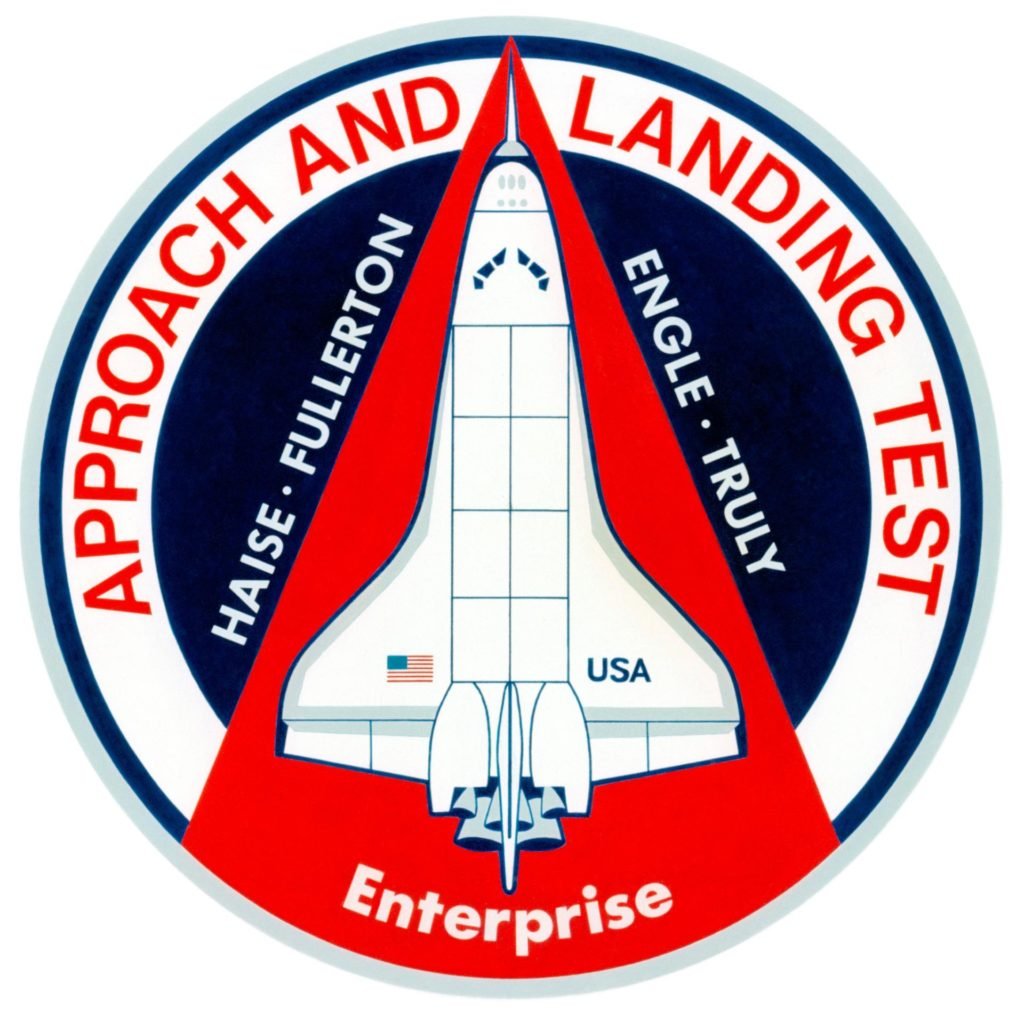
The data collected during the ALT program led to refinements in the shuttle’s design, particularly in areas such as the control surfaces, landing gear, and flight software. These improvements were incorporated into the operational shuttles, contributing to the overall success of the Space Shuttle program.
Legacy and Current Status
The Space Shuttle Enterprise, though it never ventured into space, holds a special place in the history of space exploration as the prototype that paved the way for NASA’s operational shuttle fleet. Its legacy is preserved through its display at a prestigious museum, where it continues to inspire and educate the public about the early days of the Space Shuttle program.
Where Is the Space Shuttle Enterprise Located Now?
The Space Shuttle Enterprise is currently housed at the Intrepid Sea, Air & Space Museum in New York City. After serving as a test vehicle and being displayed at the Smithsonian National Air and Space Museum’s Steven F. Udvar-Hazy Center in Virginia, the Enterprise was transferred to the Intrepid Museum in 2012. The shuttle is exhibited on the museum’s flight deck within a specially designed pavilion, allowing visitors to view this historic spacecraft up close. The exhibit offers a unique opportunity to connect with a piece of aerospace history, showcasing the shuttle’s contributions to the development of reusable spacecraft technology.
Is the Enterprise on the Intrepid Real?
Yes, the Space Shuttle Enterprise displayed at the Intrepid Museum is the genuine prototype used in NASA’s early testing phases. Unlike other exhibits that might feature replicas, the shuttle at the Intrepid is the actual vehicle that underwent critical tests, such as the Approach and Landing Tests (ALT), which were crucial in refining the design and operation of the space shuttle fleet. The authenticity of the Enterprise adds to the exhibit’s value, offering visitors a direct link to the pioneering efforts that led to the successful deployment of operational shuttles like Columbia, Challenger, Discovery, Atlantis, and Endeavour.
The Journey to the Intrepid Museum
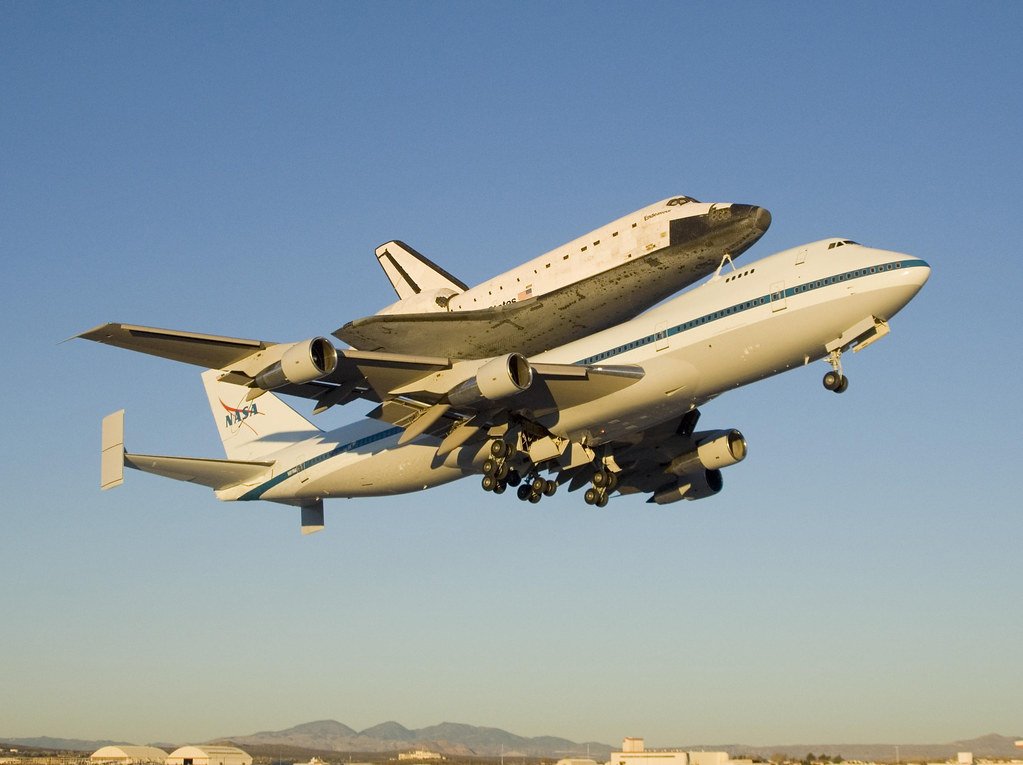
The relocation of the Space Shuttle Enterprise to the Intrepid Sea Air & Space Museum was a remarkable event that captured the public’s imagination. In April 2012, the Enterprise made its way to New York City, carried by a Boeing 747 Shuttle Carrier Aircraft (SCA). This journey was a spectacle, as the shuttle and its carrier flew over significant landmarks, including the Statue of Liberty and the Empire State Building, allowing thousands of spectators to witness this historic event.
The Transport Process
The transport involved meticulous planning and coordination. The shuttle, mounted on the SCA, was carefully maneuvered to avoid obstacles and ensure a safe flight path. Upon arriving at the Intrepid Museum, the shuttle underwent a complex transfer process. Special equipment was used to lower the Enterprise from the SCA onto the museum’s flight deck. Engineers and crews worked around the clock to prepare the pavilion and install the shuttle, ensuring its protection from the elements and providing a fitting display environment.
The Custom Pavilion
A custom-designed pavilion was explicitly constructed to house the Enterprise. This pavilion includes climate control systems to preserve the shuttle’s condition and provides a viewing area for visitors. The design of the pavilion complements the shuttle’s historical significance, offering an aesthetically pleasing and educational display that highlights the shuttle’s contributions to space exploration.
Significance in Space Exploration
Technological Innovations and Advancements
The Space Shuttle Enterprise was instrumental in introducing and validating several key technologies that would become foundational to the operational shuttles. Among the most significant innovations was the concept of reusability. Before the shuttle program, spacecraft were typically single-use, which limited the frequency and cost-effectiveness of space missions. The Enterprise’s successful tests demonstrated the feasibility of a reusable spacecraft, leading to the development of a fleet capable of frequent and cost-effective missions.
Influence on Future Spacecraft
The design principles and technologies validated by the Enterprise had a lasting impact on the development of future spacecraft. Many of the shuttle’s aerodynamic and structural elements were incorporated into the operational shuttles, enhancing their performance and reliability. The lessons learned from the Enterprise also influenced the design of newer space vehicles, including NASA’s Orion capsule and various commercial spacecraft. The Enterprise’s legacy continues to inform the design and development of cutting-edge space technology.
Cultural Impact and Public Engagement
Enterprise in Popular Culture
The Space Shuttle Enterprise has not only made history as a pioneering spacecraft but also cemented its place in popular culture, mainly through its connection to the iconic Star Trek series. The shuttle was named after the fictional starship USS Enterprise, a symbol of exploration and innovation in the series. This naming was more than just a tribute; it reflected the cultural resonance of the shuttle as a beacon of humanity’s aspirations to explore new frontiers.
Symbolism in Star Trek
The USS Enterprise in Star Trek is often portrayed as a vessel on a mission to explore the unknown, mirroring NASA’s goals with the Space Shuttle program. The decision to name the shuttle after fans of the series influenced the starship and even involved a campaign by Star Trek enthusiasts. The connection between the two Enterprises has become a powerful symbol of the intersection between science fiction and reality, inspiring people to dream of what lies beyond our planet.
Broader Cultural Impact
The Space Shuttle Enterprise’s influence extends beyond the realm of science fiction. It has been featured in various documentaries, films, and educational programs, further embedding it into the cultural consciousness. The shuttle represents more than just a technological achievement; it embodies the spirit of human curiosity and the desire to push the boundaries of what is possible. This cultural impact has helped make the Enterprise a recognizable symbol of innovation, celebrated by both the scientific community and the general public.
Educational Programs at the Intrepid Museum
The Intrepid Sea, Air & Space Museum’s exhibit on the Space Shuttle Enterprise is a cornerstone of the museum’s educational mission. The exhibit is designed to engage visitors of all ages, providing a comprehensive and interactive experience that brings the Enterprise’s story to life.
Interactive Displays and Multimedia Presentations
The museum utilizes state-of-the-art technology to create immersive learning experiences. Interactive displays allow visitors to explore the shuttle’s design, mission history, and technological innovations in a hands-on manner. Multimedia presentations offer deeper insights into the challenges and triumphs of the Space Shuttle program, with archival footage, interviews, and detailed animations that explain complex concepts in an accessible way.
Engaging Educational Programs
The Intrepid Museum offers a variety of educational programs designed to inspire interest in space exploration and STEM (science, technology, engineering, and mathematics) fields. These programs include guided tours, workshops, and lectures that delve into the history and significance of the Enterprise and its role in advancing human spaceflight. The museum also hosts events and activities tailored to different age groups, ensuring that the legacy of the Space Shuttle Enterprise is made accessible to a broad audience.
Inspiring Future Explorers
By offering these educational resources, the Intrepid Museum aims to spark curiosity and inspire the next generation of explorers, engineers, and scientists. The exhibit not only educates visitors about the past achievements of the Space Shuttle program but also encourages them to think about the future of space exploration. The museum’s commitment to education ensures that the legacy of the Enterprise continues to influence and inspire those who will carry forward the torch of innovation.
Though never used for spaceflight, the Space Shuttle Enterprise remains a symbol of groundbreaking achievements in aerospace engineering. Built by Rockwell International, it was the prototype shuttle and played a crucial role in validating NASA’s reusable spacecraft concept. Its current display at the Intrepid Sea, Air & Space Museum ensures that its legacy continues to inspire and educate future generations. The Enterprise’s contributions to space exploration highlight the importance of innovation and perseverance in advancing human knowledge, making it an enduring symbol of exploration and technological progress.

